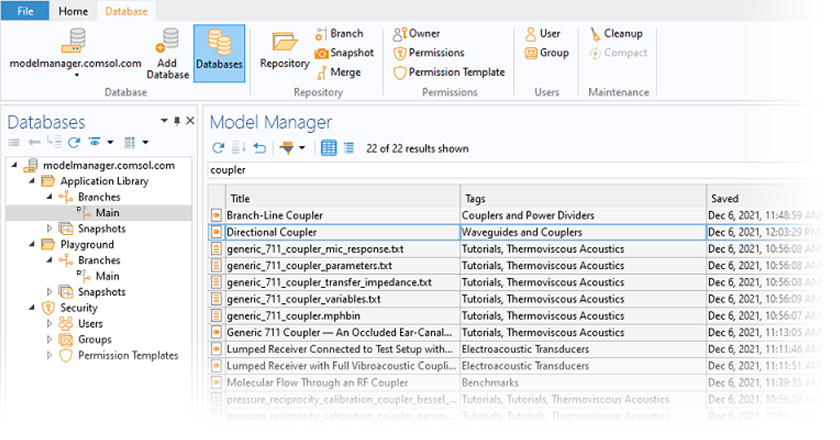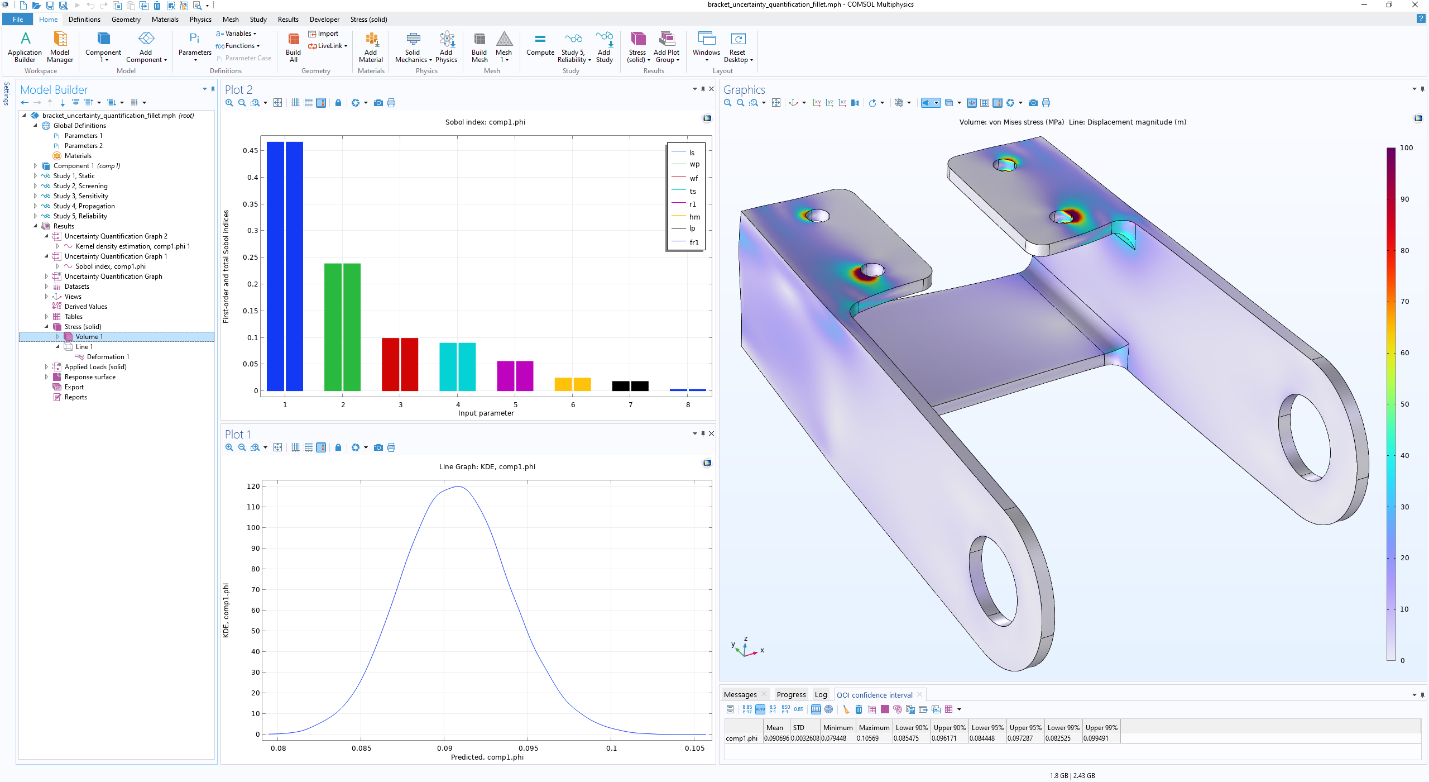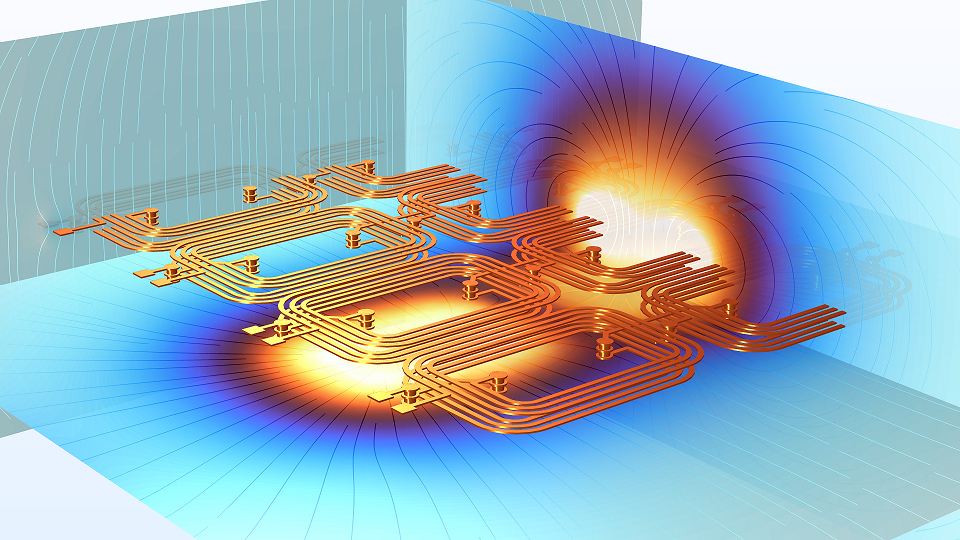Creating innovative products and managing their lifecycle from conceptual design to implementation often becomes not just a complex task, but a serious challenge for the development team. Modeling methods enable them to find solutions that meet both business needs and the requirements of a particular engineering problem. Modeling mitigates the production risks in production or, for example, ensures the effectiveness and safety of pharmaceuticals. The key to successful modeling is to make an accurate description of the physical laws that underlie a particular system. With multiphysics modeling, engineers can visualize any phenomena and describe their impact. They create accurate numerical models that reduce the need for physical prototyping. Applications and user-friendly interfaces are being created to enable users around the world to run virtual tests with numerical modeling.
- Use cases for multiphysics modeling
- Capabilities of modern multiphysics modeling software
- The Model Manager provides structure, version control, and effective collaboration
- The Uncertainty Quantification Module enhances the sensitivity and reliability analyses
- COMSOL Multiphysics Version 6.0 improves performance and expands modeling capabilities
- Compatibility
Use cases for multiphysics modeling
Multiphysics modeling is an indispensable tool in industries that need to create devices with micro- and nanoscale precision. So, today, modeling is becoming a key step in the production of microelectronic components.
For example, to create competitive high-performance chips, you need to fit as many transistors as possible into a given unit area. Science marches on: physical elements are getting smaller and more sensitive to minor changes in environmental parameters, which entails problems for the manufacturing process. Compared to previous generations, modern systems have much higher accuracy. In this case, the only engineering solution available is numerical modeling, and the knowledge it provides can be leveraged in any production facility.
Let us provide an example from the pharmaceutical industry: a pharmaceutical manufacturer transported drugs in primary containers—vials that had to be sterilized according to certain standards because the bacteria in the drugs could cause irreparable harm to health. However, the standard sterilization procedure based on the diffusion transfer of ethylene oxide failed to meet the requirements for new containers. Thus, the sterilization process had to be changed. Instead of conducting sophisticated and expensive experiments, the engineering team proposed modeling the diffusion of ethylene oxide in vials. The application they created allowed them to set penetration and contamination boundaries and define the inbound dissolubility and diffusion constants to calculate transient ethylene oxide concentration profiles. The process engineers used simulation software to determine the concentration of ethylene oxide that would ensure the desired sterilization quality. As a result, the real-life experiments were either reduced or completely eliminated, which accelerated the problem resolution.
Capabilities of modern multiphysics modeling software
COMSOL is one of the leading providers of software solutions for multiphysics modeling.
Its flagship product is COMSOL Multiphysics®, an integrated numerical modeling environment for design, manufacturing, and research applications. It provides a user-friendly interface to account for coupled or multiphysics phenomena, to create and administer models and applications.
COMSOL add-on products offer special functions for modeling electromagnetics and acoustics, calculating the stress-strain state of solids, and numerical analysis of fluid flow, heat exchange, and chemical processes.
The release introduces the Model Manager, a new workspace in COMSOL Multiphysics that enables efficient simulation data management for models and applications, collaboration, and version control. Also introduced is the Uncertainty Quantification Module, a new multi-purpose add-on product to COMSOL Multiphysics that uses probabilistic design methods to quantify uncertainty in analyses using statistical methods. Version 6.0 further brings major improvements to the solvers with performance speedup by a factor of 10 in engineering areas such as heat radiation and models subjected to nonlinear structural material behavior. With version 6.0, COMSOL promises to boost the productivity of engineers, their teams, and their enterprises in the areas of innovative product design and development.
The Model Manager provides structure, version control, and effective collaboration
The Model Manager is fully integrated into the COMSOL Multiphysics user interface and is designed for simulation data management, version control, tracking changes, and advanced search functionality within models, CAD data, and other related external files. It provides a convenient workspace where colleagues and teams can collaborate within their organizations and even with external parties, putting the focus on effective product design and innovation. Efficient data storage that keeps only changes made to previous versions and the easy setup of parallel model development for collaboration of multiple groups also contribute to an organization’s efficient modeling and simulation workflow.
 The COMSOL Model Manager provides version control and common storage for efficient collaboration in numerical modeling projects.
The COMSOL Model Manager provides version control and common storage for efficient collaboration in numerical modeling projects.
"The Model Manager expands on COMSOL’s cutting-edge multiphysics modeling capabilities and our fast-paced strategy of placing COMSOL Multiphysics as the primary tool for democratizing simulation in the CAE market," says Svante Littmarck, CEO and president of COMSOL. "We now complement our revolutionary Model Builder and Application Builder for developing multiphysics models and simulation apps with the Model Manager for model development and simulation data management. Together, this functionality will facilitate collaboration within engineering groups, across departments and enterprises, and even between countries. This will inevitably lead to better process and manufacturing designs as all competencies of an organization are harnessed effectively."
To allow full collaboration across enterprises, COMSOL’s floating network license (FNL) type allows users from anywhere within and outside of the license holder’s organization to access a centralized Model Manager installation. This also includes collaborators across geographical and territorial borders. Additionally, a local Model Manager installation is included with all licenses — even those that are not floating-network based — to provide a platform for building an individual user’s file storage structure, while updating versions and tracking changes in their modeling projects.
The Uncertainty Quantification Module enhances the sensitivity and reliability analyses
While the Model Manager expands COMSOL’s footprint within the world of engineering design and development, the Uncertainty Quantification Module makes it possible to produce more complete, accurate, and useful multiphysics models. Based on probabilistic design methods, users can, with reliability analysis, look at questions such as how manufacturing tolerances affect the intended performance of the final product, to prevent over- and under-designs of devices and processes and reveal their weak spots. Sensitivity analysis reveals parameters that are more important than others, which can be used to efficiently test the validity of basic model assumptions. For example, an uncertainty propagation law can be used to assign probability distributions to the model's output parameters.
 The Uncertainty Quantification Module reveals how variability of input parameters affects the simulation results.
The Uncertainty Quantification Module reveals how variability of input parameters affects the simulation results.
"A strength of the Uncertainty Quantification Module is that it can be applied to any physical simulation covered by COMSOL Multiphysics," says Jacob Yström, technology director of numerical analysis at COMSOL. "You are not limited to a certain field or application area, such as structural analysis, but can perform the same types of uncertainty analyses on applications based on acoustics, fluid flow, electromagnetics, and so on, and even when these phenomena are coupled. This makes this product wide-ranging and very powerful."
COMSOL Multiphysics Version 6.0 improves performance and expands modeling capabilities
COMSOL Multiphysics version 6.0 includes important updates to the software platform and add-on products. This includes performance improvements through speedup and memory consumption by a factor of 10 for certain engineering applications. Feature enhancements include more efficient electromagnetic simulation of PCB designs and a new realm for acoustics modeling: flow-induced noise.
 COMSOL version 6.0 delivers performance improvements and simplifies simulation of many important applications, such as printed circuit board (PCB) design.
COMSOL version 6.0 delivers performance improvements and simplifies simulation of many important applications, such as printed circuit board (PCB) design.
Compatibility
COMSOL Multiphysics®, COMSOL Server™, and COMSOL Compiler™ software products are supported on the following operating systems: Windows®, Linux®, and macOS, including the macOS M1 processor.
COMSOL product page: http://soft.softline.ru/comsol-inc









